If you want to know about the DPC and water proofing or introduction of pile foundation or types of concrete and its uses, please click the link.
Walls in architecture serve a multitude of purposes, including providing structural support, creating enclosure, defining interior and exterior spaces, providing protection, regulating temperature and providing insulation, and contributing to the overall aesthetics of the building.
1) Function of wall
- To provide protection from weather, animal
- To divide the areas
- Act as sound barriers
- As fire walls to attenuate the spread of fire from one building unit to another
- Separate the interior spaces
- To improve the building appearance
- To provide privacy
2) Material for wall construction
- Timber, brick, concrete block, reinforced concrete can be used for wall construction.
- Good for wall construction due it’s durability, beauty and able to provide comfortable area
- Cenegal is suitable to be used at hot and cold climate area
- Meranti can be used for all types of construction in the building.
- Reinforced concrete used for precast concrete panel
3) Wall classification
- There are 2 types of wall that is:
- Load Bearing Wall – Able to carry the load from above (own weight & load from roof) and transfer it to the foundation.
- Non Load Bearing Wall – Only carry their own weight
i) Load bearing wall

It can be exterior wall or interior wall. It braces from the roof to the floor.
- Pre-Cast Concrete Wall
- Retaining Wall
- Masonry Wall
- Pre-Panelized Load Bearing Metal Stud Walls
- Engineering Brick Wall (115mm, 225mm)
- Stone Wall
- As the height of the building increased, required thickness of wall and resulting stress on foundation will also increase and cause it to be uneconomical.
- Removing a section of a load bearing wall to create a pass-through requires adding a new beam and columns to support the floor above. As shown in figure below.

- Pre-Panelized Load Bearing Metal Stud Walls

- Stone Wall (Load Bearing Wall)

- Precast Concrete Wall (Load Bearing Wall)
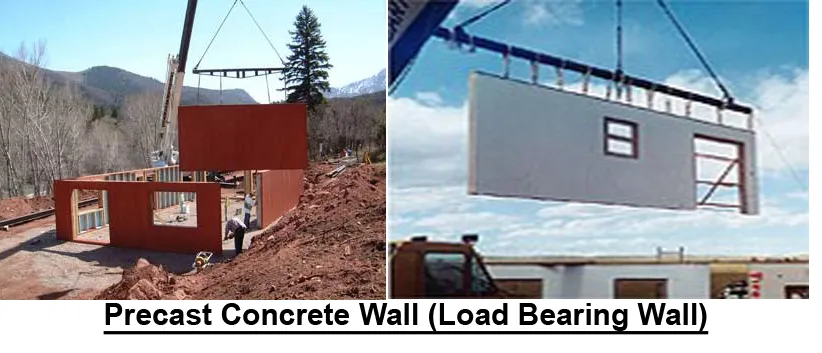
- Retaining Wall (Load Bearing Wall)
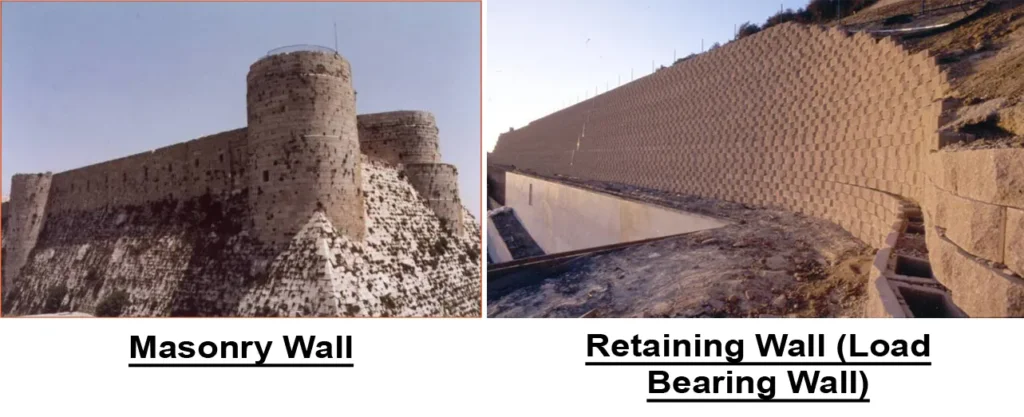
ii) Non load bearing wall

- known as interior wall (doesn’t carry other load than its own load)
Types of non-load bearing wall
- Hollow Concrete Block
- Façade Bricks
- Hollow Bricks
- Brick Wall (115mm, 225mm)
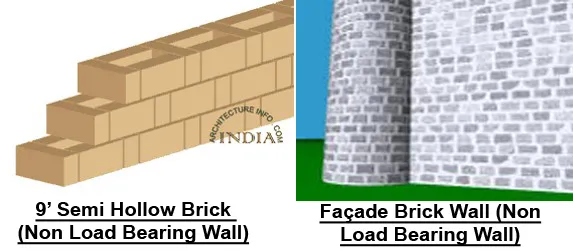
4) key points to consider about walls in architecture
Here are some key points to consider about walls in architecture:
- Structural support: Walls are essential for providing structural support to a building. They help distribute the weight of the building and provide stability.
- Enclosure and privacy: Walls create an enclosure and provide privacy, defining the interior and exterior spaces of a building.
- Protection: Walls also provide protection from the elements, such as wind, rain, and heat, as well as from intruders.
- Insulation: Walls can be designed to provide insulation and regulate temperature within a building.
- Aesthetics: Walls can be designed to create visual interest, define spaces, and express the character and style of a building.
- Materials: Walls can be constructed using a variety of materials, such as brick, stone, concrete, wood, and glass, each with its unique properties and aesthetic qualities.
- Sustainability: In sustainable architecture, walls can be designed to promote energy efficiency, reduce waste, and enhance the ecological performance of a building.
4) Brick’s bonding
- Stretcher Bond
- Header Bond
- English Bond
- Flemish Bond
- Garden-Wall Bond
- Raking Bond
- Dutch Bond
- Brick-On-Edge Bond
- English Cross Bond
- Facing Bond
5) Cavity wall
- “A wall constructed in 2 leaves / skins with a space / cavity between them”
- “A type of building wall construction consisting of an outer wall fastened to inner wall separated by an air space”
Function
- To prevent the penetration of rain to the internal surface of the wall
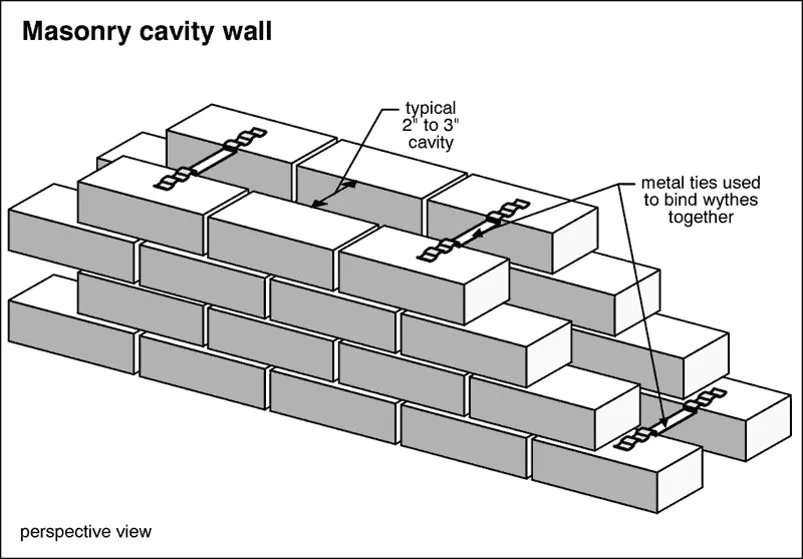
6) Shear wall
- A framed wall designed to resist lateral wall
- It is a vertical elements of the horizontal force resisting system
- It is used to resist wind and earthquake loading on a building.
- It is typically a wood frame stud walls covered with a structural sheathing material like plywood.
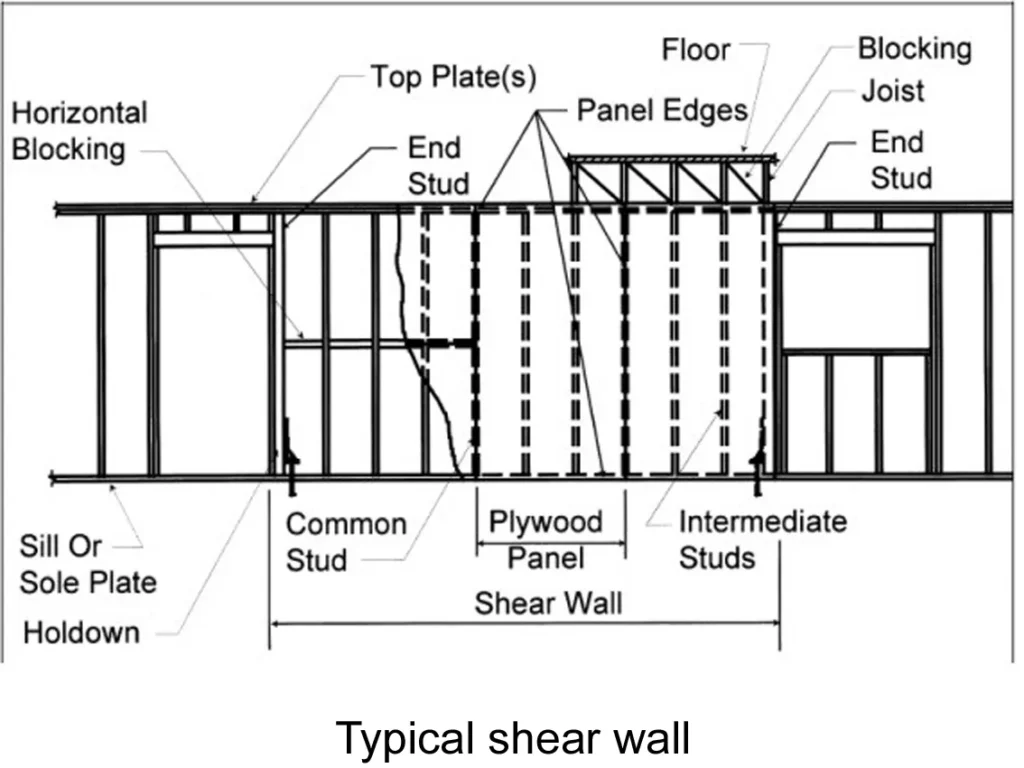
7) Wall failure
- Vertical bowing and horizontal bending or collapse of wall is usually caused by the wall not resisting vertical pressures from foundation or upper floors & roofs or horizontal pressures from strong winds and retained earth.
- Usual cause for failure of wall are as follows:
– Overloading the wall, deflection of beam above the wall will effect the wall below.
– Foundation failure
– Earthquake
– Timber pest damage weakened the timber wall
– Poor workmanship (improper brickwork)


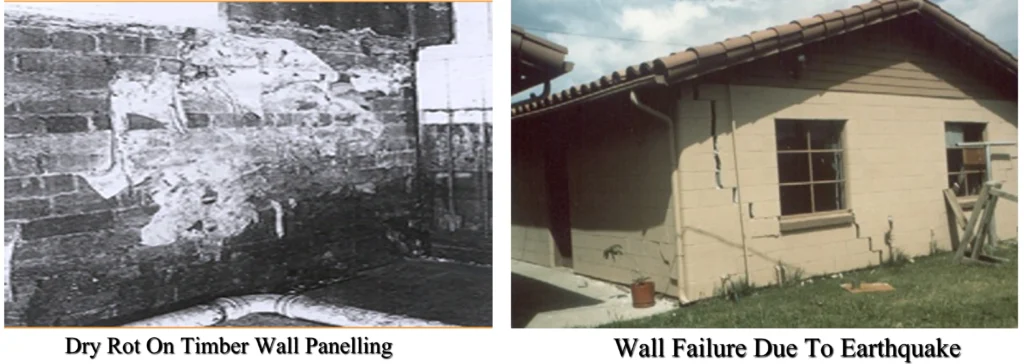
Overall, walls are a critical element of architectural design, serving both functional and aesthetic purposes in creating buildings that are safe, comfortable, and visually appealing.